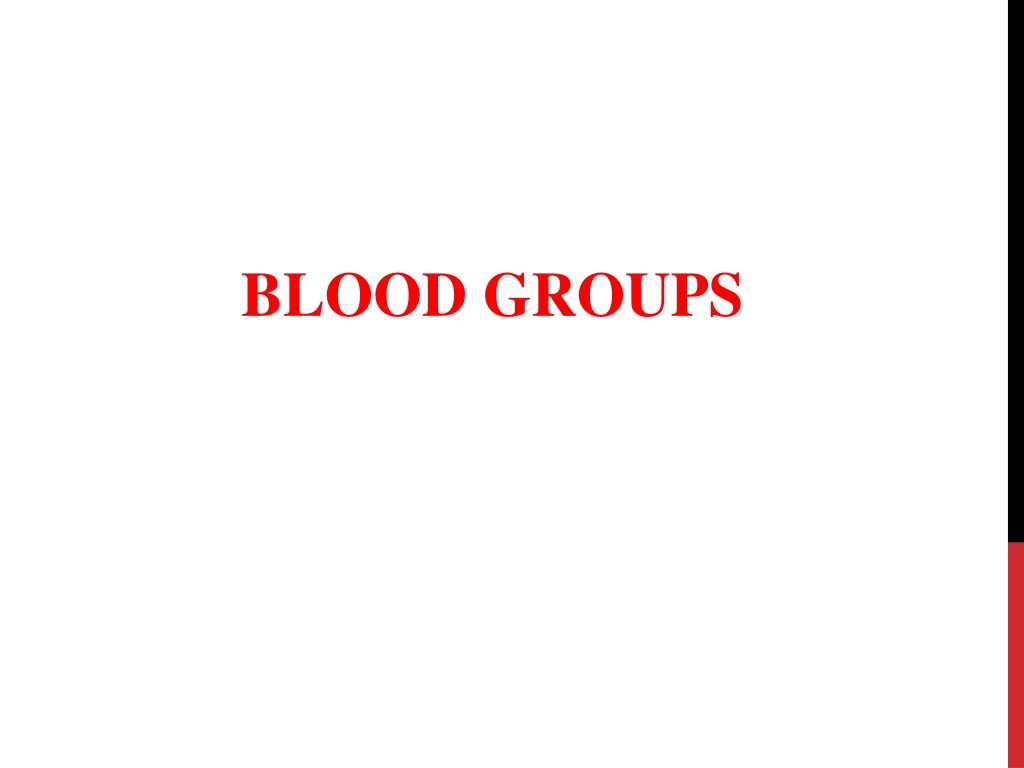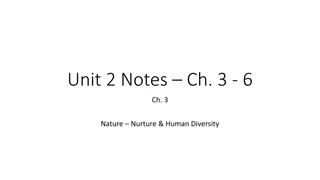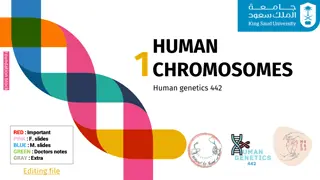Understanding Human Blood Groups and Genetics
Human blood groups are determined by the presence or absence of specific antigens and antibodies. The ABO system categorizes blood into four types (A, B, AB, O), while the Rh factor (D antigen) determines whether blood is RhD positive or negative. Blood group antigens are crucial for safe transfusions and forensic purposes, with genetic inheritance playing a role in establishing an individual's blood type.
Download Presentation

Please find below an Image/Link to download the presentation.
The content on the website is provided AS IS for your information and personal use only. It may not be sold, licensed, or shared on other websites without obtaining consent from the author. Download presentation by click this link. If you encounter any issues during the download, it is possible that the publisher has removed the file from their server.
E N D
Presentation Transcript
1. To determine the blood group according to the ABO system. 2- To test for the availability of the Rh factor (D antigen)
The differences in human blood are due to the presence or absence of certain protein molecules called antigens and antibodies. The antigens are located on the surface of the red blood cells Antigens are also found in a wide variety of tissues and biological fluids such as saliva, milk , seminal fluid, urine , and gastric juice. The antibodies are in the blood plasma to attack foreign antigens, resulting in clumping (agglutination)
-The ABO blood type system is the major blood type classification system. - The four blood types in the ABO system (A, B, AB, and O) refer to different versions of oligosaccharides which are present on the surface of RBCs.
Blood group antigens must be determined to secure a safe practice of blood transfusion. They are also useful in determining familial relationships in forensic medicine.
Your blood type is established before you are born, by specific GENES inherited from your parents. You have two copies of this gene, one inherited from your MOTHER and the other inherited from your FATHER.
There are 3 alleles or genes for blood type: A, B, & O. Since we have 2 genes, there are 6 possible combinations.
First studied in rhesus monkeys. Is the second most significant blood group system in human transfusion. The D antigen (RhD) is the most important. If it is present on RBCs surface, the blood is RhD positive (~80% of the population), if not it's RhD negative. So, for example, some people in group A will have it, and will therefore be classed as A+ (or A positive), while the ones that don't, are A- (or A negative) and so it goes for groups B, AB and O.
A person with Rh+ blood can receive blood from a person with Rh- blood without any problems A person with Rh- blood can develop Rh antibodies in the blood plasma if he or she receives blood from a person with Rh+ blood, whose Rh antigens can trigger the production of Rh antibodies
Also called, Erythroblastosis Fetalis Mother is Blood type Rh-, Father and fetus are Rh+ First pregnancy = sensitization at delivery due to hemorrhage Second pregnancy = Mother produce anti-Rh IgG antibodies that cross placenta to attack fetal RBCs leading to hemolysis
Principle Of Test Type B blood gp Anti B antibodies Agglutination Hemolysis Seen as the picture

























